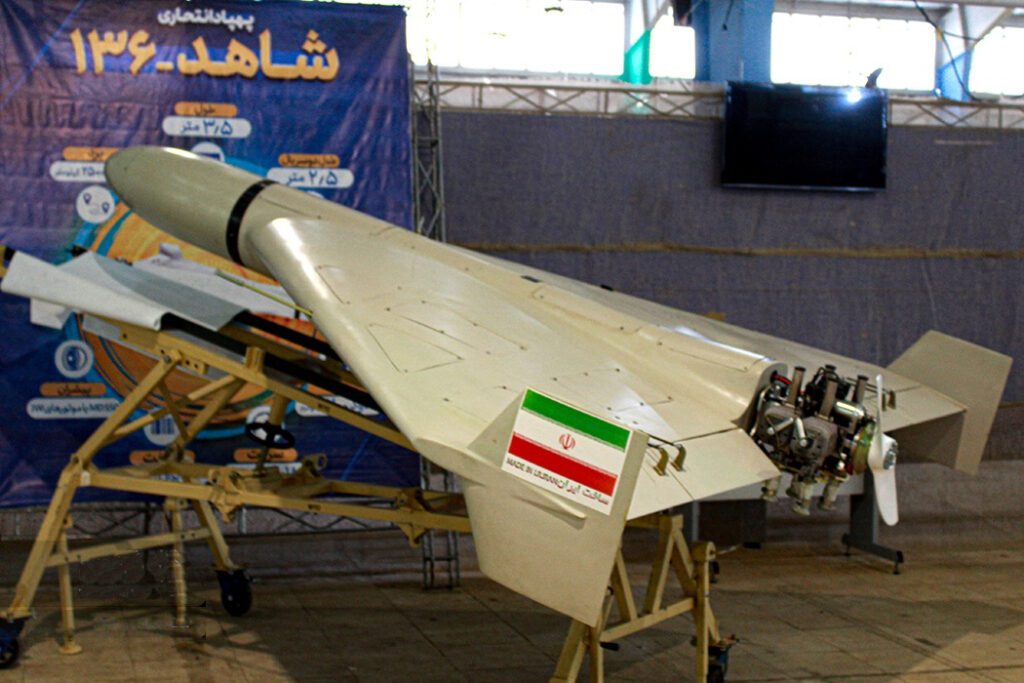
By Fars Media Corporation, https://commons.wikimedia.org/w/index.php?curid=138324174
Shahed-136 Drone: Kamikaze UAV Transforming Modern Warfare
The Shahed-136 Drone is a loitering munition developed by Iran. Often called a kamikaze UAV, it is designed for low-cost, long-range precision strikes. Its effectiveness and affordability have made it a widely discussed system in recent asymmetric conflicts.
Shahed-136: Drone Design and Capabilities
Unlike traditional UAVs, this drone is built for single-use missions. It delivers an explosive payload by crashing into the intended target. Thanks to its simplicity and long operational range, it offers notable battlefield value, especially in swarm tactics.
- Wingspan: Approximately 2.5 meters
- Warhead: ~40 kg explosive payload
- Range: Estimated between 1,000–2,500 km
- Guidance: Presumed GPS/INS-based navigation
- Launch Platform: Ground-based rail launcher systems
Combat Deployment and Strategic Use of Shahed-136
Military forces use this system in large numbers to overwhelm enemy defenses. Due to its low cost, it fits well into swarming attack strategies. Common targets include energy facilities, logistics hubs, and static infrastructure. In urban conflicts, it has also been used alongside missiles and other UAVs.
International Reactions and Strategic Influence
The drone has triggered varying responses worldwide. While some governments see it as a practical asymmetric warfare tool, others raise concerns about its impact on civilian areas. Its increasing use is pushing nations to adapt air defense strategies and review the role of loitering munitions in modern doctrine.
Concerns Over Global Spread
Due to its accessible design and affordability, experts warn about its potential proliferation. Non-state actors or aligned states could replicate or acquire it, leading to broader security concerns. Arms control discussions now include loitering munitions like this one as a new area of regulation.
Limitations and Challenges
Despite being effective in certain scenarios, this drone has notable weaknesses. Its relatively slow speed and noisy engine increase detectability. Moreover, it struggles with precision targeting and electronic warfare environments. These vulnerabilities limit its effectiveness against high-end defense systems.
Conclusion
In summary, this low-cost kamikaze UAV reflects a growing trend in modern conflict. Armed forces are increasingly relying on expendable drones to conduct strategic missions. As this type of technology spreads, nations must invest in counter-drone solutions and adjust their defense policies accordingly.
Also read our post on Top Turkish Drones in 2025 for insights into other cost-effective UAV systems shaping modern battlefields.





